Generation
Executable objects go through four execution stages. The first one is the Activation stage. The generation stage includes the following steps:
- The Agent is assigned to the task immediately before generation.
- Variables are resolved.
- The properties of the object are read.
-
If PromptSets and READ statements are applicable, a dialog pops up. On this dialog, you to modify the object properties for the current execution.
If you have defined standard values for the PromptSets and READ statements, these values are used and no manual intervention is needed.
- For Jobs: the trailer Include and all related user Includes are processed.
-
JCL commands are generated and transferred to the Agent so that the commands are ready to run on the target computer during the Processing stage.
The commands do not run on the target computer during the generation stage.
Important! The generated JCL can be modified, however changes are only considered for the current execution. The report contains the original JCL and the modified one with an extra line indicating who changed the content.
- Queues are assigned for execution.
- Sync (SYNC) objects, if assigned to the task, are considered.
- The system checks the maximum number of simultaneous executions that has been assigned to the task.
- The scripts that are defined on the Pre-Process and Process pages are processed, see Process Pages. For information about the order in which scripts on the various Process pages are processed, see Script Processing.
-
For Workflows:
- The Workflow structure is read and available in the Process Monitoring.
- Workload balancing takes place. All tasks in the Workflow are active and the Agents are allocated, so the workload can now be balanced.
Note: Not all script types are processed in the generation stage. The following types of scripts are processed at later stages:
- Event Processes (Events (EVNT)) and Child Post Processes (Child Post-Process Page) are executed in the processing stage.
- Post Processes (Post Process Page) are processed in the completion stage.
Tip: On the Attributes Page, you can define that the object should be generated either at activation or at runtime. This attribute can have an important impact in the execution times of your tasks. Have a look at Generating at Activation or at Runtime, where the implications of either option are described.
The following diagrams describe the steps that a task goes through during the generation stage.
Preparing for Generation
Immediately after it has finished the activation stage, the task is either waiting for user input or it enters the generation stage. The following steps take place:
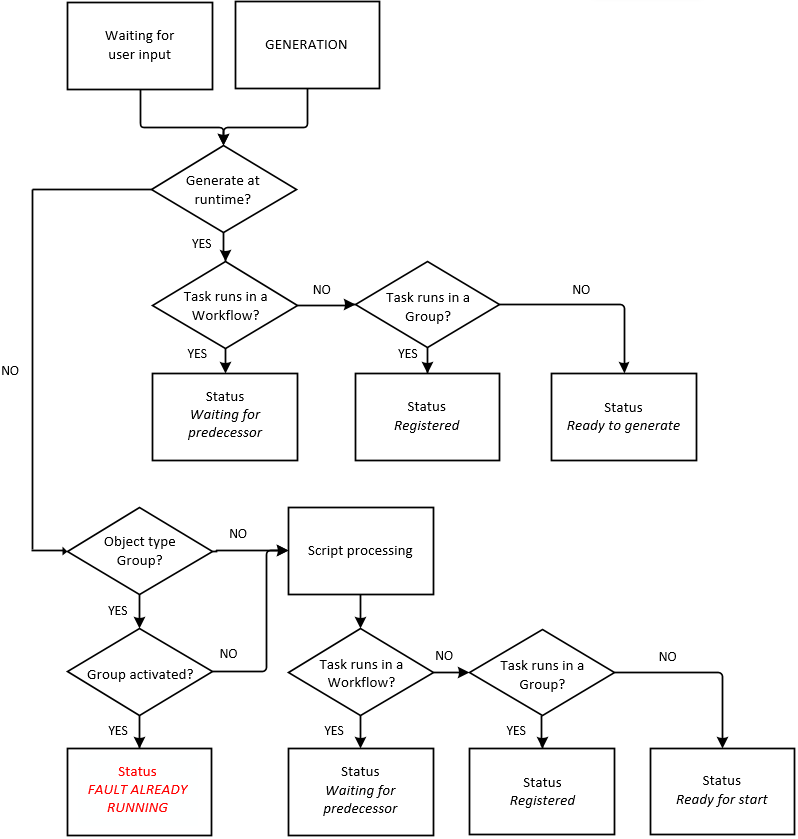
At this point, the task can have one of the following statuses:
- FAULT already running
- Waiting for predecessor
- Registered
- Ready for start
Status: Ready to Generate, Ready to Start, or Waiting for Manual Release
If the task reached this point in the generation with one of these statuses, the following validations and actions take place:
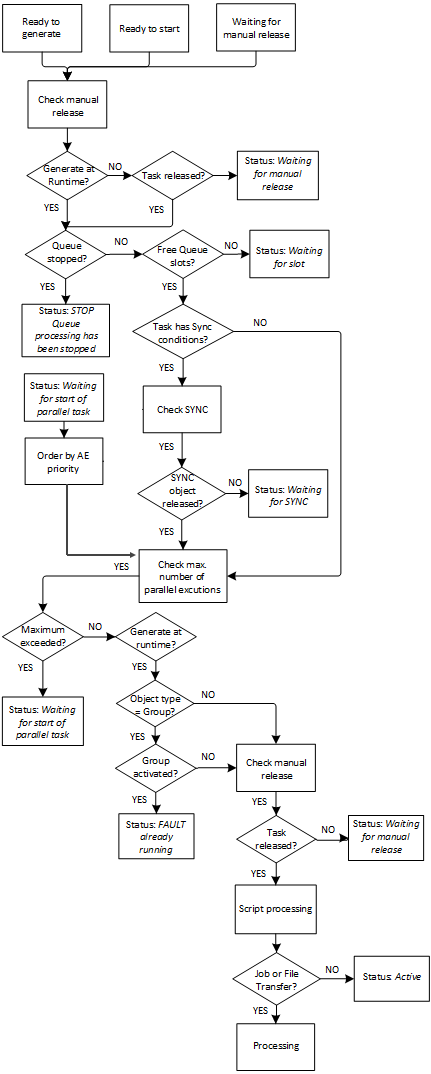
Status: Waiting for Predecessor
If the task reached the Waiting for Predecessor status, the following validations and actions take place:
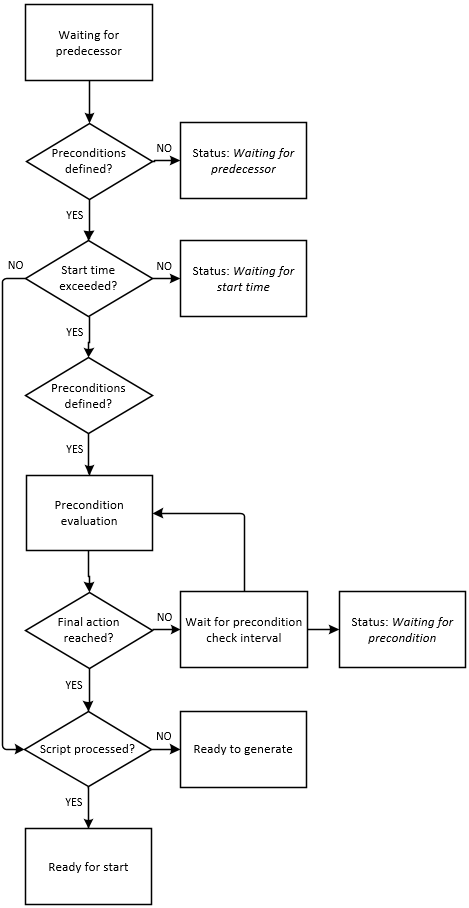
Status: Waiting for Start Time
If the task reached the Waiting for start time status, the following validations and actions take place:

Status: Registered
If the task reached the Registered status, the following validations and actions take place:
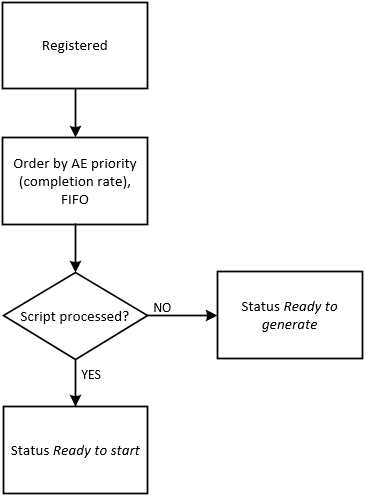
Script Processing in Detail
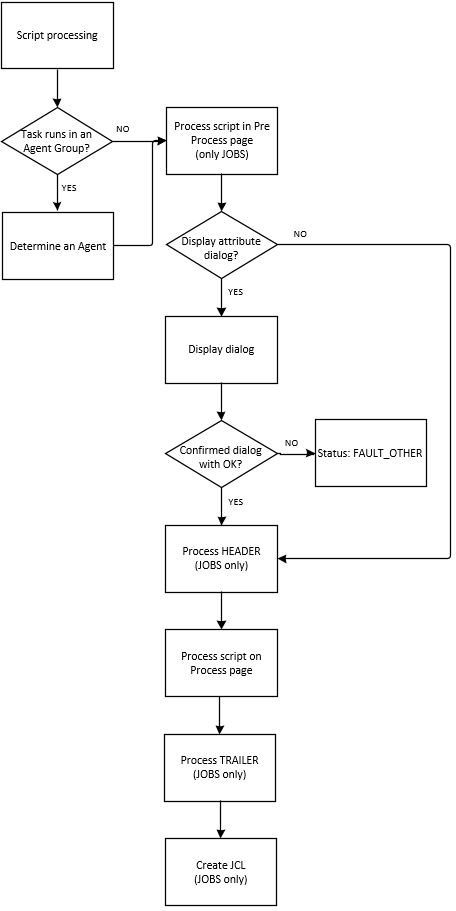
Next Stage
When the generation stage has finished, the task enters the Processing stage.
See also: